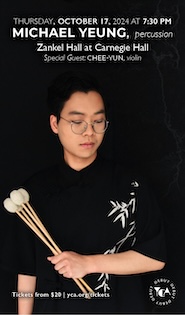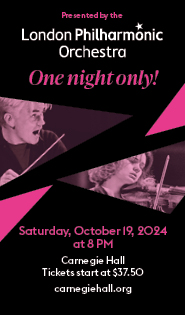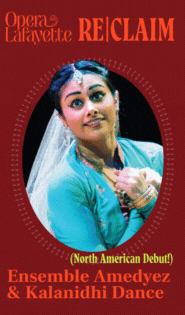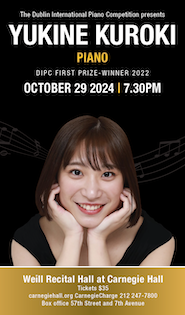Love is all around Philharmonic, from Pintscher to Mendelssohn to Schoenberg
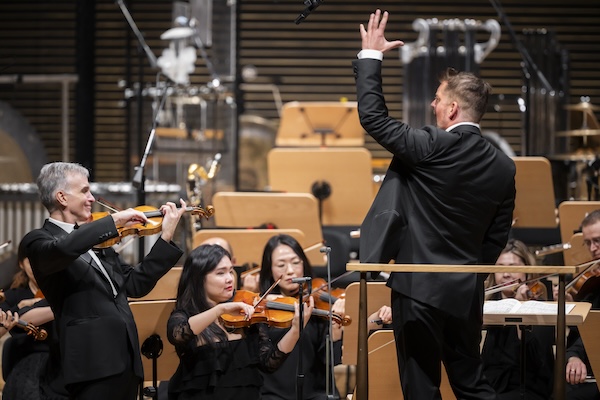
The overarching theme of Thursday’s intriguing program of the New York Philharmonic, conducted by Matthias Pintscher, was love.
Love for a whole world in distress animated Pintscher’s own piece titled neharot, a threnody for those lost in the Covid-19 pandemic, in its U.S. premiere. The love of two famous friends, Felix Mendelssohn and the violinist Ferdinand David, led to a concerto that became an immediate audience favorite and remains so today. And finally a Tristan-like love triangle brought on Wagnerian surges in the young Arnold Schoenberg’s tone poem Pelleas und Melisande.
But on Thursday, as the subject matter grew more intimate with each piece, the means to express it expanded. Pintscher’s lean but imaginative scoring gave way to Mendelssohn’s “symphonic” take on the violin concerto, rich with brass and winds (a novelty for virtuoso concertos in that early Romantic era), and the program culminated in a post-Straussian extravaganza of secret passion for large orchestra.
In a way, the expanding aspect of Thursday’s program seemed analogous to Pintscher’s own recent career move, exchanging the directorship of the modernist Ensemble Intercontemporain for that of the Kansas City Symphony.
As shaped by the composer on the podium, neharot opened with a roar, then quickly dwindled to a rumble and strange pianissimo echoes, establishing the piece’s dark, undulating canvas of low winds and strings.
The title is the Hebrew word for rivers, and also tears. The composer has said he was inspired by the timeless beauty of Chartres Cathedral, destroyed and rebuilt over the centuries. But ripples and bells á la Debussy were not on the agenda here. Instead, dark musings, interrupted phrases and sudden silences seemed to evoke the choking sensation of grief and the empty chair at the dinner table.
At times a sparkle of high percussion opened up cathedral-like sonic space, which was then filled with agitated passages, suggesting the rending of garments. Here and there, a snatch of melodious lament for a solo trumpet or oboe gleamed, then faded. The piece closed diminuendo, amid blunt, thudding textures, with one final bump, forte.
Understandably, given the overall character of the piece, the audience’s applause was respectful and appreciative, but not prolonged.
In contrast, the violinist Gil Shaham, a favorite in these parts, was greeted with an ovation before he set bow to string. When he did so, the tone was slender and somewhat steely as the first movement of Mendelssohn’s Violin Concerto raced along. The tender second theme offered soloist and orchestra a chance to pull back and warm up the mood, which they did only slightly, and the solo cadenza was dispatched efficiently. Shaham’s playing was polished and shapely, in its brisk way.
Warmth arrived at last in the Andante, with its throbbing string phrases and gentle woodwinds supporting the violinist’s elegantly soaring line. The richness of his instrument’s lower register was also welcome. Soloist and orchestra beautifully sustained the long diminuendo of the movement’s closing pages.
As often happens in concerto finales, the performers seemed to mistake the composer’s marking “molto vivace” for “molto fast.” Conductor Pintscher beat one to a bar as the woodwinds scrambled to keep up with the violinist’s flying arm and fingers, and the movement’s spicy interplay was blurred. But there was no denying Shaham’s deft delivery, which was rewarded at the end with enthusiastic applause.
Called back twice to the stage, Shaham offered a sprightly encore, the Gavotte en Rondeau from Bach’s Partita No. 3 in E major.
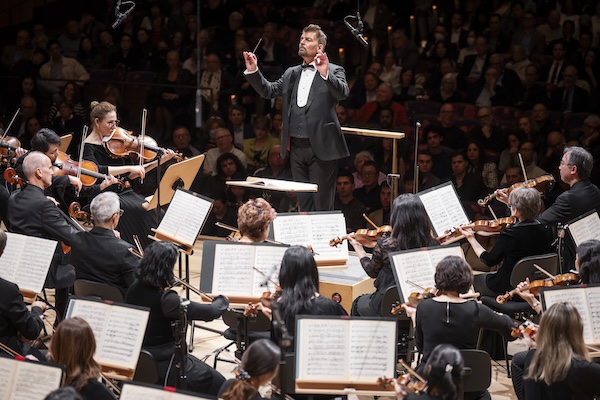
Maurice Maeterlinck’s poetic drama Pelléas et Mélisande, a landmark of the Symbolist movement in literature, inspired music by composers as diverse as Fauré, Debussy and Sibelius. The play’s message was perhaps too elusive for Richard Strauss, the master of the Technicolor tone poem, who instead of composing on it himself recommended it to the 28-year-old Arnold Schoenberg.
The younger composer responded with an ecstatic piece lasting three quarters of an hour—Straussian in its orchestral opulence but even less grounded in tonal harmonies than the master’s adventurous scores. Hearing it Thursday, one couldn’t help thinking of the young Tchaikovsky pouring on the romance and violent action in his fantasy-overture Romeo and Juliet.
Conductor Pintscher dug for deeper, richer sonorities than the orchestra had produced in his own piece or the concerto, and expertly managed episodes both dramatic and romantic. Crepuscular mutterings evoked the seething jealousy of Melisande’s husband Golaud. And although the play doesn’t reveal whether Pelleas and Melisande consummated their love, this piece’s piled-high crescendos left little doubt where Schoenberg came down on the question.
Concertmaster Frank Huang sweetly impersonated Maeterlinck’s heroine in extensive violin solos. The covered yet very present tone of Ryan Roberts’s English horn was an essential component of the misty Symbolist atmosphere.
Orchestral sections combined to cinematic effect, whether organ-like and spooky for the scene in the castle vault or softly glowing for the lovers’ tryst. The piece’s closing pages, a long descent for strings with timpani strokes echoing spent passions, affectingly depicted Melisande’s decline to a gentle death.
The program will be repeated 2 p.m. Sunday. nyphil.org
